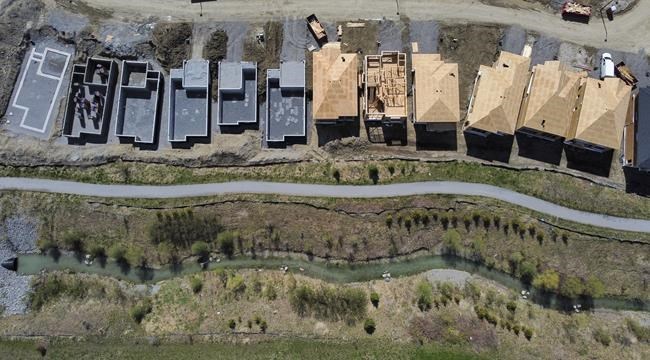OTTAWA — New research shows house prices in Canada's suburbs grew faster than in downtown areas during the pandemic as remote work spurred a preference for bigger homes.
The Bank of Canada said in a study Monday that the closure of many downtown services coupled with a desire for more living space increased demand for homes in suburban areas.
This shift weakened the so-called proximity premium typically associated with homes in more urban areas, which tend to be more expensive due to scarcer land, shorter commutes and better access to services, the central bank said.
The research shows that while house prices increased strongly in most neighbourhoods during the pandemic, the growth was strongest in the suburbs.
As a result, the real estate price gap between Canada's suburbs and downtown areas — already narrowing steadily pre-pandemic — shrank considerably, the bank said.
In 2016, for example, suburban homes in Canada typically sold for 33 per cent less than those in the downtown core, according to the bank's study.
By 2019, they were selling for 26 per cent less as the gap narrowed.
If the same trend continued, by 2021 houses in the suburbs were expected to sell for about 21 per cent less than in downtown areas.
But instead, houses in the suburbs sold for about 10 per cent less than in downtown areas — a significant reduction in the price gap between the suburbs and downtown areas, the bank said.
Meanwhile, as the economy reopens from pandemic shutdowns many workplaces have fully reopened or transitioned to a hybrid work environment, where workers are required to be in the office a few days a week.
In addition, services and amenities that were shut down during the pandemic — such as salons, gyms and restaurants — have reopened.
The shift in working conditions and reopening of downtown offices and businesses could once again influence the housing market.
The bank warned that if the change in preferences towards larger homes outside downtown areas is fleeting, housing prices in the suburbs could face downward pressure.
"If this preference shift is temporary, the proximity premium could return partly toward its pre-pandemic level," the bank said in the study.
"Such a shift in relative prices could be especially problematic if housing supply in more suburban areas were to respond strongly in anticipation of local demand continuing to increase."
This report by The Canadian Press was first published June 20, 2022.
The Canadian Press



